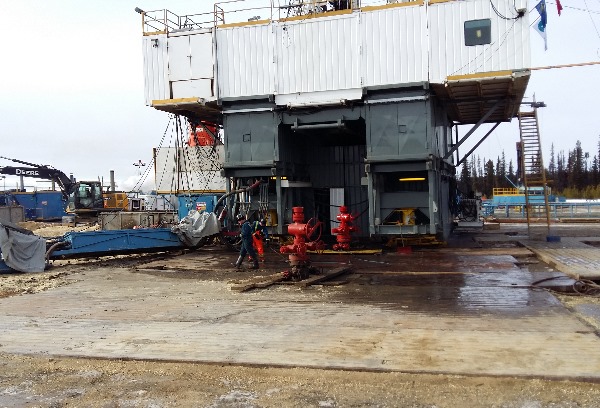Is importing drivers a solution, or a problem?
Why are we importing drivers from other countries when we have drivers graduating from trucking schools that can’t find work now? (Not to mention our unemployment situation). It was astonishing to see how many ads I viewed when researching this topic.
I was also shocked at how many people wanting to get into trucking couldn’t get the funding required through the limited amount of government or company programs available.
I often wonder if the PNP (Provincial Nominee Program) is worth it? Is the cost of training, expenses and other costs associated with importing a driver cheaper than the alternative?
The alternative I’m referring to is working with the resources and driver pool we already have here in Canada. Pay more money, improve conditions, make it a more attractive industry. This is the start of addressing the problem. Everybody is aware of this, but few companies actually act on it. Maybe they’ve been manipulating statistics and the situation to avoid doing what they have to do? Pay more money and pay for hours worked.
With the turnover rate as high as it is, larger companies are spending thousands of dollars training and orientating new drivers every month. Can this money be redirected to higher pay, retention bonuses, or full training programs that including licensing?

To combat the trucker shortage, many fracturing service companies offer on-the-job training to obtain a truck licence.
What happens to an imported driver that loses their license? What happens if they commit a crime or become an “unqualified” driver? Do they get deported, or do they stay in the country? Later we’ll discuss the health care burden to the taxpayer as an example of another real cost of this program.
It may be a solution to the company, but another burden to the tax payer. We should be exhausting our existing resources first.
CTA Blue Ribbon Task Force on driver shortage
Take a look at the study done by the CTA (Canadian Trucking Alliance), that was released in 2012. (I’ll post a link at the bottom.) I advise you to read it. They’re pretty clear about making the points we all know as drivers are true. If you do a little “reading between the lines” you’ll pick up on a few other matters.
Here’s an excerpt outlining the Task Force Members.
“In 2011, a Blue Ribbon Task Force comprising selected members of the CTA Board of Directors from across Canada was formed to try and provide leadership in the daunting task of developing a coherent direction for moving forward on the driver shortage issue. The members of the task force include:
- Paul Easson (CTA Chair), Eassons Transport, NS
- Gord Peddle (CTA Executive Committee, Chairman of the Canadian Trucking Human Resources Council (CTHRC)), Atlantic Diversified, NF
- Don Streuber (CTA 1st Vice Chair), Bison Transport, MB
- Mark Seymour (CTA 2nd Vice Chair), Kriska Transportation, ON
- Brian Taylor (CTA Board, OTA Chair), Liberty Linehaul, ON
- Bruno Muller (CTA Immediate Past Chair), Caron Transport, AB
- Ed Malysa (CTA Executive Committee), Trimac Transportation, AB
- Carl Rosenau (CTA Board, Alberta Motor Transport Association (AMTA) Chair), Rosenau Transport, AB”
I had this picture in my head of the meetings being like a parliamentary battle in the House of Commons. East against West, party against party. This was probably a difficult study to put together given the difference of opinion that would exist among members. Especially the western companies against the eastern ones considering the west pays higher wagers. If you do read it, you’ll see what I mean.
The report actually hit the nail on the head probably due to certain Task Force Members on this Board. There are some companies that truly know the value of a driver, and pay them accordingly. These companies are fighting hard to improve things for drivers. You know who these companies are right away if you are working for one, or have worked for one in the past.
I’m sure most of us have seen both sides of this fence?
And here’s their summary:
“The root causes or underpinnings of the driver shortage can basically be categorized as follows:
- Driver demographics;
- Driver compensation;
- Driver quality of life; and,
- Driver qualifications.
Here’s the link I promised to post for the for the taske force study from the Canadian Trucking Alliance
The most recent statistic I could find show that Canada has well over 600,000 class one operators and just over 250,000 employed behind the wheel. There are far too many conclusions that could be manipulated from this statistic, so I’ll leave this one for you to ponder. Now do you think there’s a shortage?
The bottom line is there’s no shortage of drivers, but a shortage of “qualified” drivers no longer willing to be exploited for their efforts. This statement is based on the root causes found by the CTA’s own findings.
If you fixed number 2 (Compensation), do you think the other 3 would be as big of an issue?
I have an underlying question regarding the study, the CTA, and the members.
If they’re aware of the problem and have identified the solution, why are so few of them acting in a way to fix it?
When the better companies pay more money, do the others cry “Sour grapes” because they’re stealing drivers?
As a driver, do you feel companies importing drivers are just deferring the real problem?
By manipulating the short term supply of drivers, are they continuing the economic exploitation to profit just a little bit longer? Are companies using PNP programs doing the best thing for the drivers, the taxpayers, and the Country?







